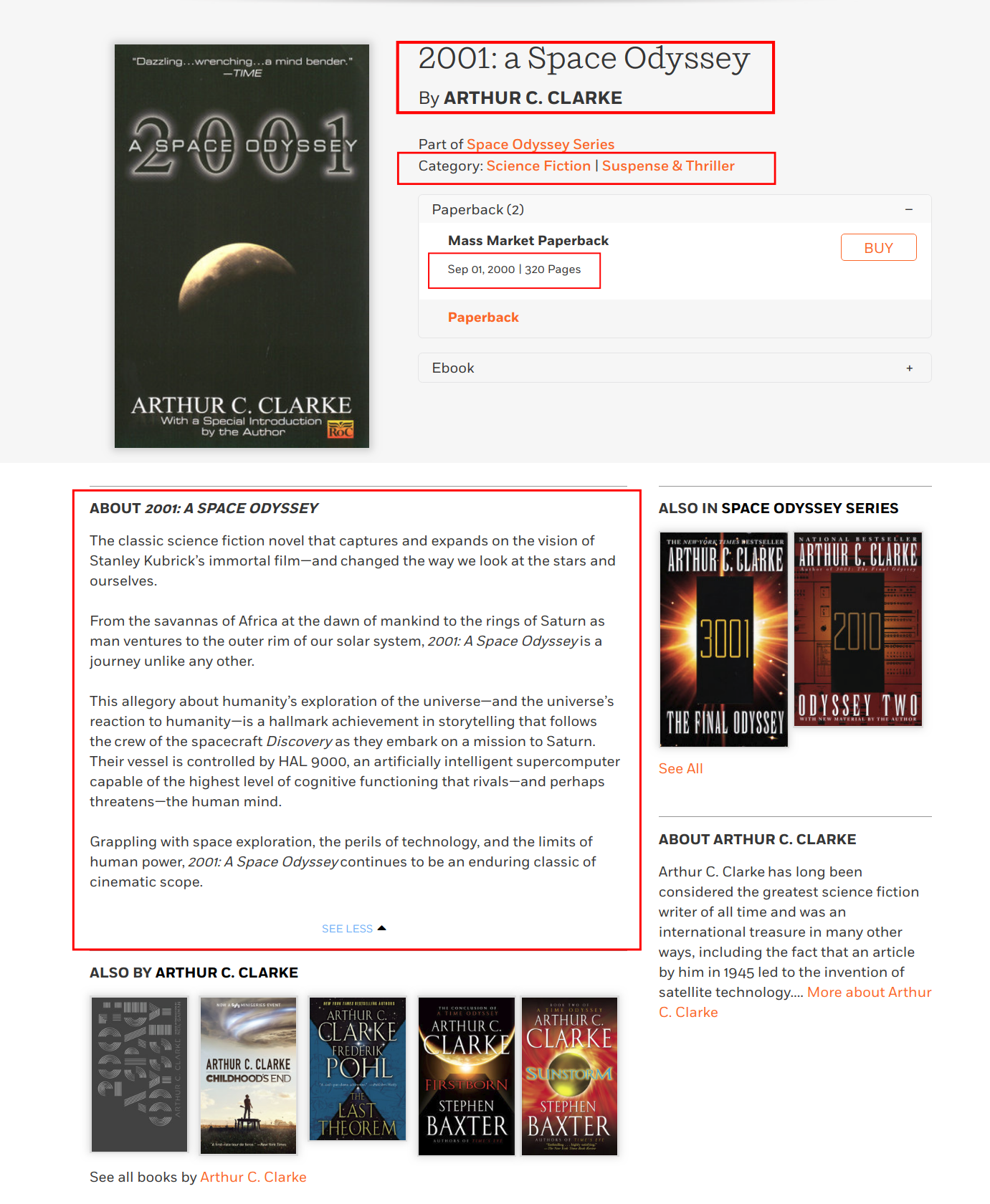Blurb Genre Collection
Introduction
The BlurbGenreCollection-EN is a dataset consisting of advertising descriptions of books - so called blurbs - for the English language. Each blurb is categorized into one or multiple categories. The categories are structured hierarchically. This dataset follows the policies as described in the RCV1 dataset by Lewis et al. (2004). We adapt RCV1's properties, which have been explained by its authors in detail and refer to their description. The minimum code policy requires the assignment of at least one category to each document of the collection. The hierarchy policy ensures that every ancestor of a document's label is assigned as well.
The copyright to all blurbs belongs to Penguin Random House (PRH), its licensors, vendors and/or its content providers since the blurbs were obtained through the penguinrandomhouse.com website. The blurbs serve promotional/public purposes and permission has been granted by Penguin Random House to share this dataset.
Contents
The Penguin Random House webpage lists every book with its respective blurb. We extracted the 'about sections' as well as the genres (category) of a book. We further extracted title, author, url, ISBN, number of pages and the date of publication. The date of publication normally represents the publication date of the particular version of the book. The data we extracted is illustrated below.

Penguin Random House: Link, accessed on 14.10.18
Since the webpages only lists the most specific genre, we manually created the hierarchy for writing genres and add all parent labels during post-processing. Further pruning was done to remove genres that capture properties which do not rely on content but on the shape or form of a book. From the Childrens' Book category, three out of ten sub-genres were kept as most of them specify the presentation and shape of a book and not the content. For example 'Picture Book', 'Boxed Sets', 'Board Books' and so on. The genre Audiobooks and all its descendants were removed as well for obvious reasons. As the last preprocessing step, we remove every book that has assigned genres (combinations) that appear less than five times in the complete dataset.
An example entry of the resulting datset is shown below:
<book date="2018-08-18" xml:lang="en">
<title>2001: a Space Odyssey</title>
<body>
The classic science fiction novel that captures and expands on the vision of Stanley Kubrick´s
immortal film-and changed the way we look at the stars and ourselves. From the savannas of Africa at the
dawn of mankind to the rings of Saturn as man ventures to the outer rim of our solar system, 2001: A
Space Odyssey is a journey unlike any other. This allegory about humanity´s exploration of the universe-and
the universe`s reaction to humanity-is a hallmark achievement in storytelling that follows the crew of the
spacecraft Discovery as they embark on a mission to Saturn. Their vessel is controlled by HAL 9000, an
artificially intelligent supercomputer capable of the highest level of cognitive functioning that
rivals-and perhaps threatens-the human mind. Grappling with space exploration, the perils of technology,
and the limits of human power, 2001: A Space Odyssey continues to be an enduring classic of cinematic
scope.
</body>
<copyright>(c) Penguin Random House</copyright>
<metadata>
<topics>
<d0>Fiction</d0>
<d1>Science Fiction</d1>
<d1>Mystery & Suspense</d1>
<d2>Suspense & Thriller</d2>
</topics>
<author>Arthur C. Clarke</author>
<published>Sep 01, 2000 </published>
<page_num> 320 Pages</page_num>
<isbn>9780451457998</isbn>
<url>https://www.penguinrandomhouse.com/books/325356/2001- a-space-odyssey-by-arthur-c-clarke/</url>
</metadata>
</book>
Additionally, a file that contains only the hiararchy in form of parent-child relationships is provided.
Quantitative characteristics
The datset is split into three subsets for training, validation and testing by appling stratified sampling to ensure that splits do not disfigure the distribution of labels. The total data is split in the ratio of 64%, 16% and 20% for train, dev and test respectively.

| Number of samples |
91,892 |
| Average length of blurb |
157.51 |
| Total number of classes |
146 |
| Average number of genres per book |
3.01 |
| Classes on each level of the hierarchy |
L1: 7; L2: 46; L3: 77; L4: 7 |
Genres

The hierarchy of the dataset consists of four levels and is organized as a forest. It is important to note that the most specific genre of a book does not have to be a leaf. For instance, the most specific class of a book could be Children’s Books, although Children’s Book has further children genres, such as Middle Grade books. However, a great number of books are simply not classified into more special classes on the website. Analyzing the occurrence of each genre combination on a log scale shows that the English dataset has a distribution in which some labels have disproportionately few or many examples as shown in the Figure below.

Classification
The dataset is used for a hierarchical multi-label classification task, where each label is part of a hierarchy. The baseline model that has been employed to classify books into their respective writing genre is the Support-Vector Machine (Cortes et al., 1995). The following results are created exclusively on basis of a book's blurb.
| Classifer |
Precision |
Recall |
F1 |
Subset Accuracy |
| SVM |
85.37 |
61.11 |
71.23 |
35.79 |
Download
License
This dataset is redistributed under the creative commons license CC BY-NC.
References
- Lewis, David D and Yang, Yiming and Rose, Tony G and Li, Fan (2004): Rcv1: A new benchmark collection for text categorization research, Journal of Machine Learning Research 5 (Apr), 361-397
- Cortes, C. and Vapnik, V. (1995). Support-vector networks. Machine learning, 20(3):273–297.

